|
Books Should Be Free Loyal Books Free Public Domain Audiobooks & eBook Downloads |
|
|
Books Should Be Free Loyal Books Free Public Domain Audiobooks & eBook Downloads |
|
Literature |
|---|
|
Book type:
Sort by:
View by:
|
By: Sir Thomas Malory | |
|---|---|
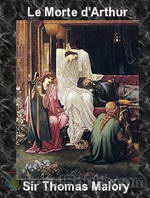 Le Morte d'Arthur
Le Morte d'Arthur
Le Morte d’Arthur (spelled Le Morte Darthur in the first printing and also in some modern editions, Middle French for la mort d’Arthur, “the death of Arthur”) is Sir Thomas Malory’s compilation of some French and English Arthurian romances. The book contains some of Malory’s own original material (the Gareth story) and retells the older stories in light of Malory’s own views and interpretations. First published in 1485 by William Caxton, Le Morte d’Arthur is perhaps the best-known work of English-language Arthurian literature today. Many modern Arthurian writers have used Malory as their source, including T. H. White for his popular The Once and Future King. | |
By: Sir Walter Scott (1771-1832) | |
|---|---|
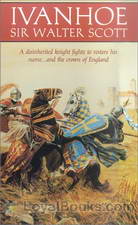 Ivanhoe
Ivanhoe
Medieval England in the 12th century. The evil Prince John rules England in place of his brother, the noble Richard the Lionheart, who is being held in an Austrian prison by Duke Leopold of Austria, while returning from one of his Crusades. Under the avaricious and Machiavellian John, the Norman aristocrats are in constant conflict with the native Saxon people. Ivanhoe by Sir Walter Scott is set in these turbulent times. The eponymous hero, Wilfred of Ivanhoe, the son of a Saxon nobleman has been disinherited by his father for following King Richard into war... | |
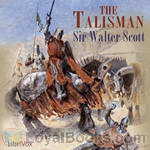 The Talisman
The Talisman
The Talisman is a gripping tale set near the end of the Third Crusade. King Richard the Lionheart is grievously ill, and all around him the leaders from allied countries plot and scheme to gain personal power, putting the future of the crusade in jeopardy. Sir Kenneth of Scotland finds himself caught up in events, and finds both his honour and his life are now on the line. Can a cure be found for the King? Can Kenneth redeem his honour? – Written by Rowen. | |
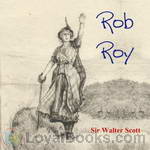 Rob Roy
Rob Roy
Rob Roy is a historical novel by Walter Scott. It is narrated by Frank Osbaldistone, the son of an English merchant who travels first to the North of England, and subsequently to the Scottish Highlands to collect a debt stolen from his father. On the way he encounters the larger-than-life title character of Rob Roy MacGregor. Though Rob Roy is not the lead character (in fact the narrative does not move to Scotland until half way through the book) his personality and actions are key to the development of the novel. | |
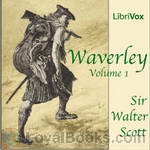 Waverley
Waverley
Waverley is set during the Jacobite Rebellion of 1745, which sought to restore the Stuart dynasty in the person of Charles Edward Stuart (or 'Bonnie Prince Charlie'). It relates the story of a young dreamer and English soldier, Edward Waverley, who was sent to Scotland in 1745. He journeys North from his aristocratic family home, Waverley-Honour, in the south of England first to the Scottish Lowlands and the home of family friend Baron Bradwardine, then into the Highlands and the heart of the 1745 Jacobite uprising and aftermath. | |
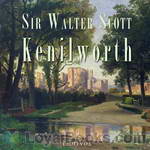 Kenilworth
Kenilworth
An Elizabethan era historical novel by Scotland’s master of fiction, Sir Walter Scott. With a cast of historical and created characters, including the Queen herself, Scott presents the sad history and tragic consequences of the secretive marriage of young Amy Robsart and the Earl of Leicester. (Summary by SK) | |
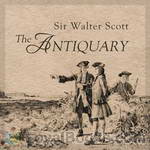 The Antiquary
The Antiquary
Illegitimacy, false identity, and bankruptcy are the major elements of Sir Walter Scott's 1816 novel, The Antiquary. Set in the period of the French Revolution, the novel's hero, Lovel, struggles to gain repute and the hand of his beloved despite his uncertain parentage. During these pursuits, he befriends the title's antiquary, Johnathan Oldbuck, who finds Lovel a captive audience to his scholarly studies and a tragic likeness to his own disappointments in love. Readers will discover whether Lovel's acts of bravery and courage ultimately earn him the birth and fortunes of a nobleman. | |
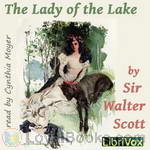 The Lady of the Lake
The Lady of the Lake
The scene of the following Poem is laid chiefly in the vicinity of Loch Katrine, in the Western Highlands of Perthshire. The time of Action includes Six Days, and the transactions of each Day occupy a Canto. | |
 Fortunes of Nigel
Fortunes of Nigel
During the turbulent moment in English history involving King James 1 and 6, Nigel Olifaunt, a Scottish lord, seeks to protect his family home and holdings, but meets with recalcitrance and treachery, which eventually results in his imprisonment. But there are forces of good that help to set him free and right injustices. | |
By: Somerset Maugham | |
|---|---|
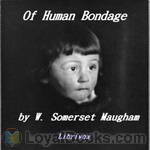 Of Human Bondage
Of Human Bondage
Of Human Bondage, published in 1915, is considered to be W. Somerset Maugham’s best work. Many believe the novel to be one of the world’s literary masterpieces. The story follows Phillip Carey from early childhood through his 30’s. Orphaned at 9, Phillip spends his early years raised by his childless aunt and uncle. His aunt tries to be a mother to Philip, but she is unsure how to behave whereas his uncle, a vicar, takes a cold disposition towards him. Philip is sent to a boarding school but his shyness and his club foot make it difficult for him to fit in... | |
By: Sophocles (495-406 BC) | |
|---|---|
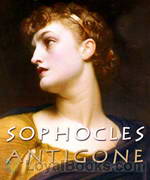 Antigone
Antigone
This is the final installment in Sophocles's Theban Plays, following Oedipus Rex and Oedipus at Colonus. Oedipus's daughter Antigone deliberately breaks the laws of Thebes when she buries her brother's body and is sentenced to death. She clashes with Creon, the King of Thebes, over what constitutes justice and morality: the laws of the state or the laws of the individual. | |
By: Soren Kierkegaard (1813-1855) | |
|---|---|
 In Vino Veritas, from Stages on Life’s Way
In Vino Veritas, from Stages on Life’s Way
In Vino Veritas is one section of Kierkegaard's Stages on Life's Way, originally published in 1845. In a conscious reference to Plato's Symposium, it is determined that each participant must give a speech, and that their topic shall be love. Lee M. Hollander said, "it excels Plato's work in subtlety, richness, and refined humor. To be sure, Kierkegaard has charged his creation with such romantic superabundance of delicate observations and rococo ornament that the whole comes dangerously near being improbable; whereas the older work stands solidly in reality... | |
 Fear and Trembling (selections)
Fear and Trembling (selections)
"And God tempted Abraham and said unto him: take Isaac, thine only son, whom thou lovest and go to the land Moriah and sacrifice him there on a mountain which I shall show thee. Genesis 22:1" Soren Kierkegaard wondered how Abraham made the movement of faith that made him the father of faith mentioned in the New Testament . Fear and Trembling is the product of his wonder. Work out your salvation in fear and trembling . One-third of "Fear and Trembling" was translated in 1923 by Lee Hollander in the University of Texas Bulliten. This book has already been read in parts in the Short Nonfiction Collection but I think some might be interested in listening to it as a complete reading. | |
By: Sōseki Natsume (1867-1916) | |
|---|---|
 Botchan
Botchan
Botchan is the story of a young math teacher from Tokyo whose first assignment takes him to a middle school in the country side. His arrival there is not very lucky: The pupils are bound to test his perseverance and cheerily comments every one of his perceived missteps. In the teacher's room, he soon finds himself in the middle of an intrigue between the jovial "Porcupine" and the fat "Hubbard Squash" on one side, and the effeminate "Red Shirt" and his follower "Clown" on the other. Will Botchan choose the right side in the end? Botchan - with morality as the main theme - is one of the most popular novels in Japan... | |
 I Am A Cat (excerpt)
I Am A Cat (excerpt)
These are the first two chapters of Natsume Sōseki's masterpiece, "I Am A Cat" . It is recognized as a landmark of modern Japanese literature, with its humorous but insightful depiction of society as seen through the eyes of a cat. The full work was published in serial form, in ten installments, in 1905-1906. Soon after, Kan-ichi Ando published an English translation of the first two chapters. Sadly, there is no translation of the full work in the public domain, but because of its episodic structure, this excerpt can easily stand on its own. - Summary by Peter Eastman | |
By: Stanley Grauman Weinbaum (1902-1935) | |
|---|---|
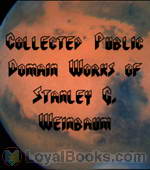 Works of Stanley G. Weinbaum - A Martian Odyssey
Works of Stanley G. Weinbaum - A Martian Odyssey
Stanley G. Weinbaum is best known for his short story “A Martian Odyssey” which has been influencing Science Fiction since it was first published in 1934. Weinbaum is considered the first writer to contrive an alien who thought as well as a human, but not like a human. A Martian Odyssey and its sequel are presented here as well as other Weinbaum gems including 3 stories featuring the egomaniacal physicist Haskel van Manderpootz and his former student, playboy Dixon Wells. | |
By: Steele Rudd (1868-1935) | |
|---|---|
 On Our Selection
On Our Selection
The humorous account of Dad and Dave and the rest of the Rudd clan as they attempt to carve a farming 'selection' out of the Australian wilderness in spite of fire, famine, snakebite, and a loony hired hand. | |
By: Stendhal | |
|---|---|
 The Red and the Black, Volume I
The Red and the Black, Volume I
Stendhal - a German pen-name for a French writer who hated the English. Contemporary to some of the great names of French literature like Balzac and Flaubert, Stendhal is quite often considered a writer that doesn't seem to fit a defined genre. Some say he's a Romantic, others that he's a Modernist and that Le Rouge et Le Noir is the first modern novel. On one point they are all agreed: the novel is a masterpiece that shows a young theology student - Julien Sorel - intelligent, handsome and who is determined to rise above his humble peasant origins... | |
By: Stephen Crane (1871-1900) | |
|---|---|
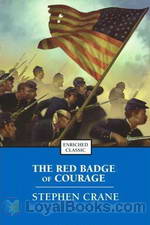 The Red Badge of Courage
The Red Badge of Courage
The Red Badge of Courage is a fiction that tells the story of a soldier named Henry Fleming during the American Civil War. The novel gained widespread praise from critics and was also a commercial success shortly after its release and made Stephen Crane an instant celebrity at the young age of 24. In the novel, Henry was one of the enlisted soldiers in the 304th New York Regiment. He flees from battle in one of the skirmishes they had against the Confederates and to hide his cowardice, he attempted to inflict a wound to himself which is referred to as the “red badge of courage... | |
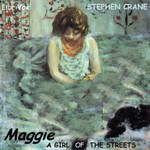 Maggie: A Girl of the Streets
Maggie: A Girl of the Streets
Stephen Crane’s first novel, Maggie: A Girl of the Streets has been called “the first dark flower of American Naturalism” for its distinctive elements of naturalistic fiction. The chief character, Maggie, descends into prostitution after being led astray by her lover. Rather than focusing on those that make up the very rich or middle class, the novel highlights the deplorable living conditions of the working class during the so-called Gilded Age in New York’s Bowery. | |
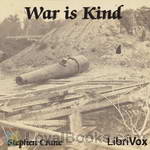 War is Kind (collection)
War is Kind (collection)
Published in 1899, just a year before his death, War Is Kind by Stephen Crane evokes again the dark imagery of war which made his fortune in The Red Badge Of Courage. Unlike that book, this collection leaves the battlefield itself behind to explore the damage war does to people’s hearts and minds. Reeking of dashed hopes, simultaneously sympathetic with the victims of war and cynical about the purposes of war, Crane implicitly criticizes the image of the romantic hero and asks if Love can survive... | |
By: Stephen Leacock (1869-1944) | |
|---|---|
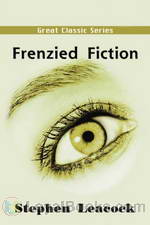 Frenzied Fiction
Frenzied Fiction
From the cave man to Santa Claus; spies, know-it-alls, and journalists: all are fair game for Leacock’s special brand of humor. He touches on the changes time has brought about in the city, education, and work habits. Among the other topics in this work are nature, fishing, gardening, success, and spirits–both of the departed and of the variety Prohibition prohibited. Each chapter of this book is a standalone story and if you love a good laugh, these stories are for you. In me, Leacock’s wit produced the full range of laughter: smiles, chuckles, guffaws, and some uncontrollable giggles. Also, occasionally, I found myself shedding a tear or two. (Review by Debra Lynn) | |
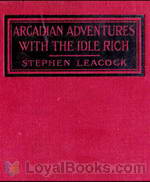 Arcadian Adventures with the Idle Rich
Arcadian Adventures with the Idle Rich
“Arcadian Adventures with the Idle Rich” is a work of humorous fiction by Stephen Leacock first published in 1914. It is the follow-up to his 1912 classic “Sunshine Sketches of a Little Town.” Like that work, it is a sequence of interlocking stories set in one town, but instead of focusing on a small Canadian town in the countryside, it is set in a major American metropolis and its characters are the upper crust of society. Although currently not as well-known as the earlier book, “Arcadian Adventures” was extremely popular in North America at the time of its publication and for a while was considered the greater success... | |
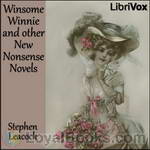 Winsome Winnie and other New Nonsense Novels
Winsome Winnie and other New Nonsense Novels
Eight silly stories by Canadian humourist Stephen Leacock. | |
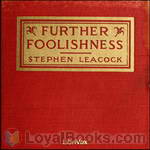 Further Foolishness
Further Foolishness
Seventeen goofy stories and essays by Canadian humourist Stephen Leacock. "Professor Leacock has made more people laugh with the written word than any other living author. One may say he is one of the greatest jesters, the greatest humorist of the age." – A. P. Herbert (Introduction by TriciaG & Wikipedia) | |
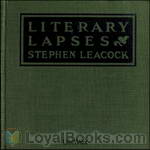 Literary Lapses
Literary Lapses
Short sketches relating the humourous side of life in 1910. "Professor Leacock has made more people laugh with the written word than any other living author. One may say he is one of the greatest jesters, the greatest humorist of the age." – A. P. Herbert | |
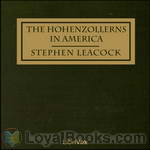 The Hohenzollerns in America
The Hohenzollerns in America
More stories by Canadian Stephen Leacock. Some of these stories carry over characters introduced in Further Foolishness. Some stories are humourous; some are more thoughtful. It helps to be familiar with WWI-era European politics to catch much of the humour. Full title: The Hohenzollerns in America With the Bolsheviks in Berlin and Other Impossibilities | |
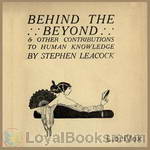 Behind the Beyond
Behind the Beyond
A collection containing a parody on Problem Plays, as well as humorous anecdotes from Canadian humourist Stephen Leacock. | |
 Moonbeams from the Larger Lunacy
Moonbeams from the Larger Lunacy
Humorous, ironic, and sometimes cynical observations of life in 1915 from Canadian humourist Stephen Leacock. | |
 My Discovery of England
My Discovery of England
"In the course of time a very considerable public feeling was aroused in the United States and Canada over this state of affairs. The lack of reciprocity in it seemed unfair. It was felt (or at least I felt) that the time had come when some one ought to go over and take some impressions off England. The choice of such a person (my choice) fell upon myself. By an arrangement with the Geographical Society of America, acting in conjunction with the Royal Geographical Society of England (to both of whom I communicated my proposal), I went at my own expense."And from thence follow the impressions of Canadian political economist and humourist, Stephen Leacock, after a lecturing visit to England. | |
 Essays and Literary Studies
Essays and Literary Studies
A collection of wry looks at literature, education, and other social phenomena by Canadian humourist and economics professor, Stephen Leacock. | |
By: Stephen Vincent Benét (1898-1943) | |
|---|---|
 A Selection from Young Adventure, A Book of Poems
A Selection from Young Adventure, A Book of Poems
Stephen Vincent Benét (July 22, 1898 – March 13, 1943) was an American author, poet, short story writer and novelist. He is best known for his book-length narrative poem of the American Civil War, John Brown’s Body (1928), for which he won a Pulitzer Prize in 1929, and for two short stories, “The Devil and Daniel Webster” and “By the Waters of Babylon”. It was a line of Benét’s poetry that gave the title to Dee Brown’s famous history of the destruction of Native American tribes by the United States: Bury My Heart at Wounded Knee. | |
By: Stewart Edward White (1873-1946) | |
|---|---|
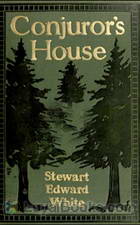 Conjuror's House, a Romance of the Free Forest
Conjuror's House, a Romance of the Free Forest
In the northern outreaches of the Canadian wilderness, it was understood that the Hudson Bay Company governed all trading, and one factor named Galen Albret took his position seriously. Free traders, or those who dared try to do their trading outside of the Company, found themselves having to face Galen Albret and his methods of dealing with them. One or two offenses he might tolerate, but for those who repeatedly refuse to acknowledge his warning out, he would send them on “La Longue Traverse” through the wilderness without supplies, and from which they seldom returned... | |
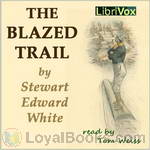 The Blazed Trail
The Blazed Trail
Stewart Edward White wrote fiction and non-fiction about adventure and travel, with an emphasis on natural history and outdoor living. White's books were popular at a time when America was losing its vanishing wilderness and many are based on his experiences in mining and lumber camps. The Blazed Trail is the story of early lumbermen in the northern woods of Michigan. The novel portrays the challenges faced by the workers focusing on one, Harry Thorpe, as he endeavors to be successful though completely unskilled when he enters the woods... | |
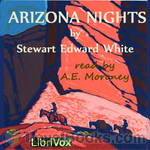 Arizona Nights
Arizona Nights
Arizona Nights is a collection of tales from the American West as told by those who took part in them. | |
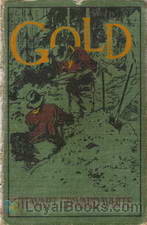 Gold
Gold
This is a well written story of the California gold rush of 1849. Four friends decide they are going to go to California and get rich in the gold fields. Follow their adventures as they travel to California across the isthmus of Panama to San Francisco. In their search for gold they encounter hostile Indians, various desperadoes, and natural disasters. Did they strike it rich? Listen and find out. | |
 Blazed Trail Stories and Stories Of The Wild Life
Blazed Trail Stories and Stories Of The Wild Life
Thirteen short stories by a popular writer of the early 20th century (not to be confused with an earlier book Blazed Trail). White's books were popular at a time when America was losing its vanishing wilderness. He was a keen observer of the beauties of nature and human nature, yet could render them in a plain-spoken style. Based on his own experience, whether writing camping journals or Westerns, he included pithy and fun details about cabin-building, canoeing, logging, gold-hunting, and guns and fishing and hunting... | |
By: Susan Coolidge (1835-1905) | |
|---|---|
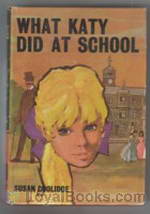 What Katy Did at School
What Katy Did at School
The continuing story of Katy Carr, recounting the time she spent at boarding school with her sister Clover. | |
 Verses
Verses
Susan Coolidge was the pen name of Sarah Chauncey Woolsey, who is best known for her What Katy Did series. This is the first of three volumes of her verse. | |
By: Susan Glaspell (1876-1948) | |
|---|---|
 Lifted Masks
Lifted Masks
In this collection of short stories, Susan Glaspell examines the unique character of America and its people. | |
By: Susan Warner (1819-1885) | |
|---|---|
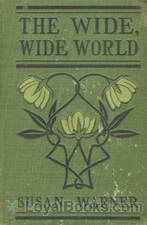 The Wide, Wide World
The Wide, Wide World
“How should a seven year old child react when forced to be separated from a mother who meant everything to her? How should she react when she learns that the aunt with whom she was sent to live doesn’t really care about her? Will she be able to make real friendships with people outside her family? Would she be able to take her belief in God as a comfort? If you want to find answers to all these questions, read the enjoyable novel “The Wide, Wide World”. There, you will see how the amazing Ellen Montgomery reacts to all those things, and many, many more”. | |
 Diana
Diana
Diana Starling is the beautiful and quiet daughter of a cold and mentally abusive mother. She falls in love with Evan Nolton, but her mother wishes her to marry someone else. Yet, despite her mother's strong objections, she chooses her own husband. However, she can be truly happy only if she forgets her first love. Will she find the strength do do that? (Introduction by Stav Nisser) | |
 Nobody
Nobody
There are many romantic tales about a handsome and rich man falling in love with a beautiful lower class woman over the objections of his family. Remember Elizabeth Bennett and Fitzwilliam Darcy? however, it takes more than a good woman to secure a man's happiness. He has to have mental strength. It is not certain that our hero, Tom, has that. Lois is a great woman. However, according to his sister, she is a "nobody." Does money and position control everything? Certainly not. Good people deserve to be happy... | |
By: Susanna Rowson (1762-1824) | |
|---|---|
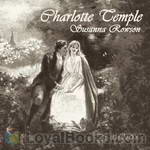 Charlotte Temple
Charlotte Temple
Charlotte Temple, a cautionary tale for young women, follows the unfortunate adventures of the eponymous heroine as she is seduced by a dashing soldier, Montraville. Influenced by both her lover and an unruly teacher at her boarding school, she is persuaded to run away to America, where she is eventually abandoned by Montraville after he becomes bored, leaving her alone and pregnant. First published in England in 1791, it went on to become America's bestselling novel, only being ousted by Harriet Beecher Stowe's Uncle Tom's Cabin. | |
By: T. S. Eliot (1888-1965) | |
|---|---|
 Homage to John Dryden: Three Essays on Poetry of the Seventeenth Century
Homage to John Dryden: Three Essays on Poetry of the Seventeenth Century
Best known as a poet and playwright, Nobel Laureate T.S. Eliot also wrote many works of literary criticism. In this volume he gives us three essays: John Dryden, The Metaphysical Poets, and Andrew Marvell. Many quotations are given to illustrate his observations and analysis of these poets. This is an important work for those interested in gaining a deeper and broader knowledge of these seventeenth century poets and their influence. - Summary by Larry Wilson | |
By: Talbot Mundy (1879 -1940) | |
|---|---|
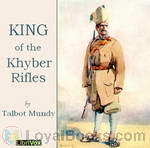 King of the Khyber Rifles
King of the Khyber Rifles
Athelstan King is a British Secret Agent stationed in India at the beginning of WWI. He is attached to the Khyber Rifles regiment as a cover, but his real job is to prevent a holy war. "To stop a holy war single-handed would be rather like stopping the wind--possibly easy enough, if one knew the way." King is ordered to work with a mysterious and powerful Eastern woman, Yasmini. Can King afford to trust her? Can he afford not to? (Introduction by Brett W. Downey) | |
By: Terry Carr (1937-1987) | |
|---|---|
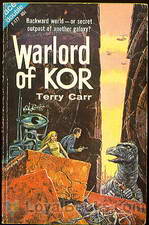 Warlord of Kor
Warlord of Kor
Warlord of Kor was originally published in 1963 as half of an Ace Double, selected by legendary editor Donald A. Wollheim. It is an interplanetary adventure, as humans probe the mysteries of the planet Hirlaj and the few remaining aliens who live there. Terry Carr never really shone as a writer, though he did write some remarkably thoughtful stories. However, his talents as an editor and anthologist were important and undeniable, and he brought many good writers and authors into science fiction and fantasy... | |
By: The Gawain Poet | |
|---|---|
 Pearl
Pearl
Written in the 14th century by the Gawain poet, 'Pearl' is an elegiac poem reflecting on the death of a young daughter, pictured as a pearl lost in a garden. It is considered a masterpiece of Middle English verse, incorporating both the older tradition of alliterative poetry as well as rhyme, centered around the development of an intricately structured image. Sophie Jewett's translation from the Northern dialect of the original renders much of the poem's liveliness and beauty accessible to modern readers, whilst encouraging them to pursue their reading further, to read the original itself.This recording is dedicated to the memory of Pearl Jean Shearman, 1914-2012. | |
By: The New York Times | |
|---|---|
 Mark Twain in the New York Times, Part One (1867-1879)
Mark Twain in the New York Times, Part One (1867-1879)
This collection of articles by and about Mark Twain and his family was compiled by Barbara Schmidt, publisher of twainquotes.com. Included in the chronological listing are some of Twain’s short stories, speeches and letters, as they appeared in the New York Times from the first up through 1924 . "Part One" of the collection includes articles that appeared from 1867 through 1879. The original microfiche articles are available at the New York Times "Time Machine" website: https://timesmachine.nytimes.com/browser/ - Summary by John Greenman and Barbara Schmidt | |
 Mark Twain in the New York Times, Part Two (1880-1889)
Mark Twain in the New York Times, Part Two (1880-1889)
This collection of articles by and about Mark Twain and his family was compiled by Barbara Schmidt, publisher of twainquotes.com. Included in Part Two of this chronological listing are some of Twain’s short stories, speeches and letters, as they appeared in the New York Times in that decade. The original microfiche articles are available at the New York Times “Time Machine” website: https://timesmachine.nytimes.com/browser/ and here. - Summary by John Greenman and Barbara Schmidt | |
 Mark Twain in the New York Times, Part Three (1890-1899)
Mark Twain in the New York Times, Part Three (1890-1899)
This collection of articles by and about Mark Twain and his family was compiled by Barbara Schmidt, publisher of twainquotes.com. Included in Part Three of this chronological listing are some of Twain’s short stories, speeches and letters, as they appeared in the New York Times in that decade. The original microfiche articles are available at the New York Times “Times Machine” website: https://timesmachine.nytimes.com/browser/. - Summary by John Greenman and Barbara Schmidt | |
 Mark Twain in the New York Times, Part Four (1900-1906)
Mark Twain in the New York Times, Part Four (1900-1906)
This collection of articles by and about Mark Twain and his family was compiled by Barbara Schmidt, publisher of twainquotes.com. Included in Part Four of this chronological listing are some of Twain’s short stories, speeches and letters, as they appeared in the New York Times in that decade. The original microfiche articles are available at the New York Times’ “Times Machine” website: https://timesmachine.nytimes.com/browser/. - Summary by John Greenman and Barbara Schmidt | |
 Mark Twain in the New York Times, Part Five (1907-1909)
Mark Twain in the New York Times, Part Five (1907-1909)
This collection of articles by and about Mark Twain and his family was compiled by Barbara Schmidt, publisher of twainquotes.com. Included in Part Five of this chronological listing are some of Twain’s short stories, speeches and letters, as they appeared in the New York Times in that period. The original microfiche articles are available at the New York Times’ “Times Machine” website: https://timesmachine.nytimes.com/browser/. - Summary by John Greenman and Barbara Schmidt | |
 Mark Twain in the New York Times, Part Six (1910-1919)
Mark Twain in the New York Times, Part Six (1910-1919)
This collection of articles by and about Mark Twain and his family was compiled by Barbara Schmidt, publisher of twainquotes.com. Included in Part Six of this chronological listing are articles concerning his death, some of Twain’s short stories, speeches and letters, as they appeared in the New York Times in that period. The original microfiche articles are available at the New York Times’ “Times Machine” website: https://timesmachine.nytimes.com/browser/. - Summary by John Greenman and Barbara Schmidt | |
 Mark Twain in the New York Times, Part Seven (1920-1924)
Mark Twain in the New York Times, Part Seven (1920-1924)
This collection of articles by and about Mark Twain and his family was compiled by Barbara Schmidt, publisher of twainquotes.com. Included in Part Seven of this chronological listing are articles concerning his death, some of Twain’s short stories, speeches and letters, as they appeared in the New York Times in that period. The original microfiche articles are available at the New York Times’ “Times Machine” website: https://timesmachine.nytimes.com/browser/. - Summary by John Greenman and Barbara Schmidt | |
By: Theodor Storm (1817-1888) | |
|---|---|
 Rider on the White Horse
Rider on the White Horse
Hauke Haien, a young man of 24 years, has just beome dikemaster in Northern Frisia. Against the resistance of many of the townfolk, he has a new dike built, not according to the old customs, but to his own specifications. For years, everything goes well, but when the big storm hits the land, a small oversight will cost him dearly. Storm tells the life of Hauke Haien from his beginnings as the clever son of a small landowner to his rise as dikemaster, where Hauke has to weather many storms - both literally and figuratively speaking. The story inside a story inside a story is considered Theodor Storm's masterpiece. | |
By: Theodora Bosanquet (1880-1961) | |
|---|---|
 Henry James At Work
Henry James At Work
Bosanquet was secretary or amanuensis to James from 1907 to his death in 1916. She wrote this essay eight years after his death as part of the series Hogarth Essays by the Hogarth Press. It is a narrative of her experience of his methods, values, and life. - Summary by David Wales | |
By: Theodore Dreiser (1871-1945) | |
|---|---|
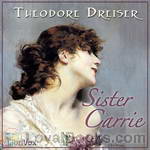 Sister Carrie
Sister Carrie
Published in 1900, Sister Carrie follows its protagonist, Carrie, as she resolutely makes her way through the bustling city of Chicago in the hope of achieving her ultimate goal of a securing a better and more glamorous life for herself. Effectively illustrating his reputation as one of America’s greatest naturalists, Dreiser deviates from the established norms and moral values present in the Victorian era, and instead focuses his attention on accurately portraying the basic instincts that influence human behavior... | |
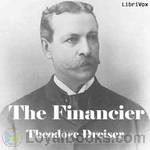 The Financier
The Financier
In Philadelphia, Frank Cowperwood, whose father is a banker, makes his first money by buying cheap soaps on the market and selling it back with profit to a grocer. Later, he gets a job in Henry Waterman & Company, and leaves it for Tighe & Company. He also marries an affluent widow, in spite of his young age. Over the years, he starts embezzling municipal funds. In 1871, the Great Chicago Fire redounds to a stock market crash, prompting him to be bankrupt and exposed. Although he attempts to browbeat his way out of being sentenced to jail by intimidating Mr Stener, politicians from the Republican Party use their influence to use him as a scapegoat for their own corrupt practices... | |
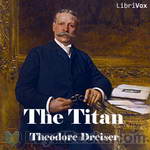 The Titan
The Titan
Cowperwood moves to Chicago with his new wife Aileen. He decides to take over the street-railway system. He bankrupts several opponents with the help of John J. McKenty and other political allies. Meanwhile, Chicago society finds out about his past in Philadelphia and the couple are no longer invited to dinner parties; after a while, the press turns on him too. Cowperwood is unfaithful many times. Aileen finds out about a certain Rita and beats her up. She gives up on him and has an affair with Polk Lynde, a man of privilege; she eventually loses faith in him... | |